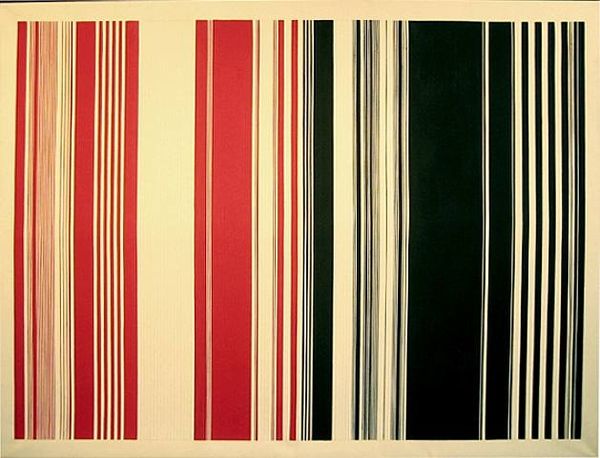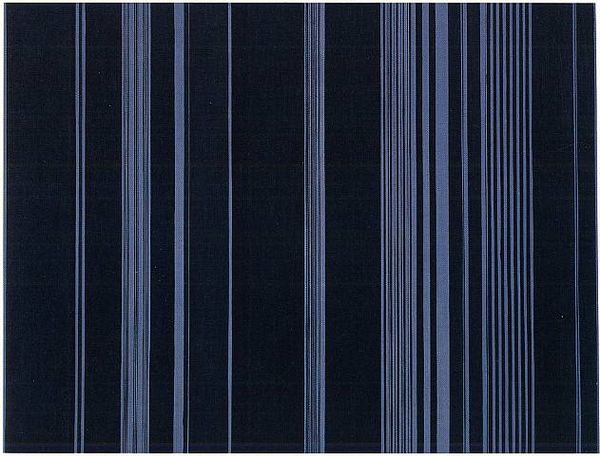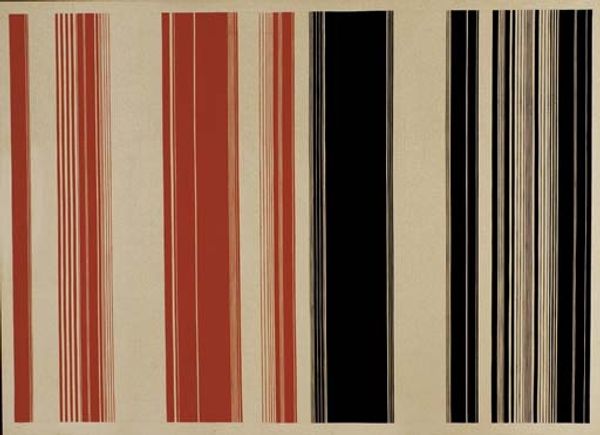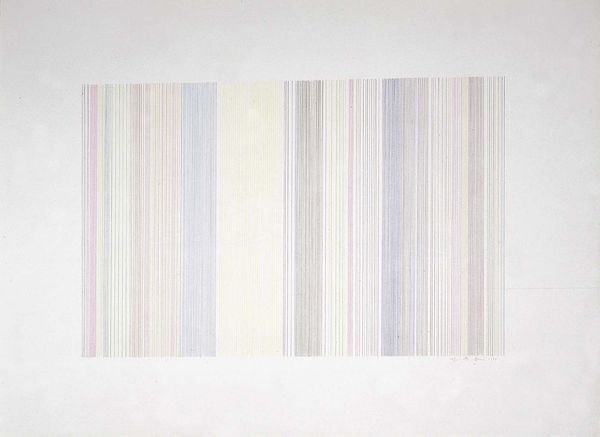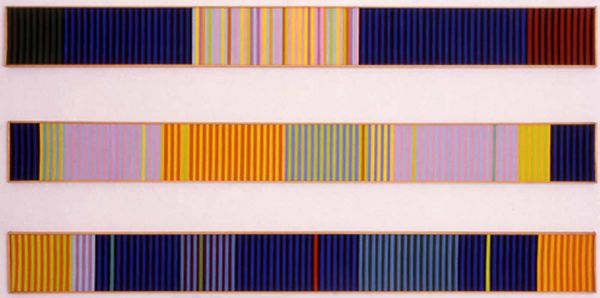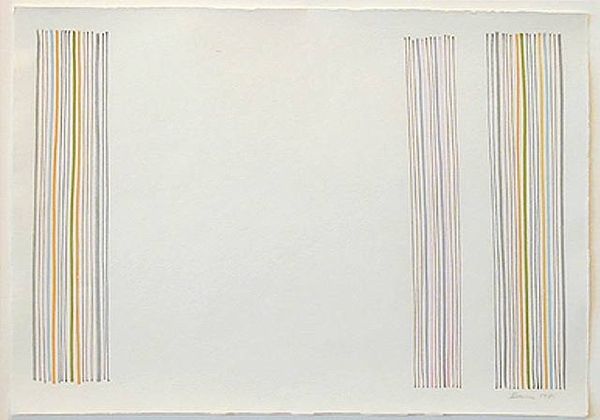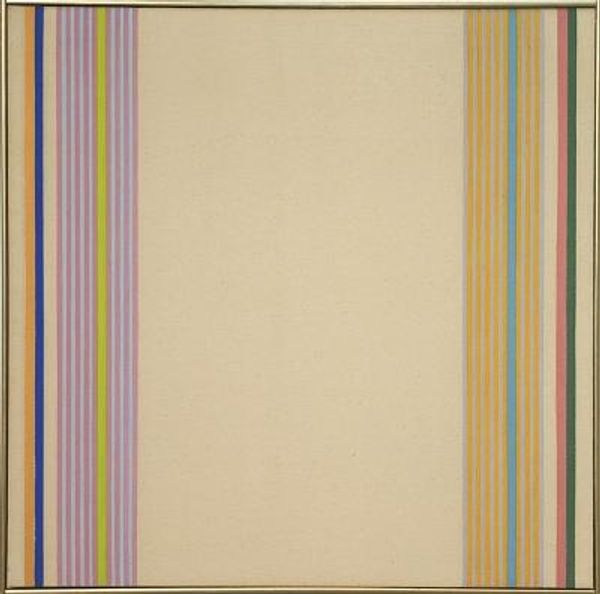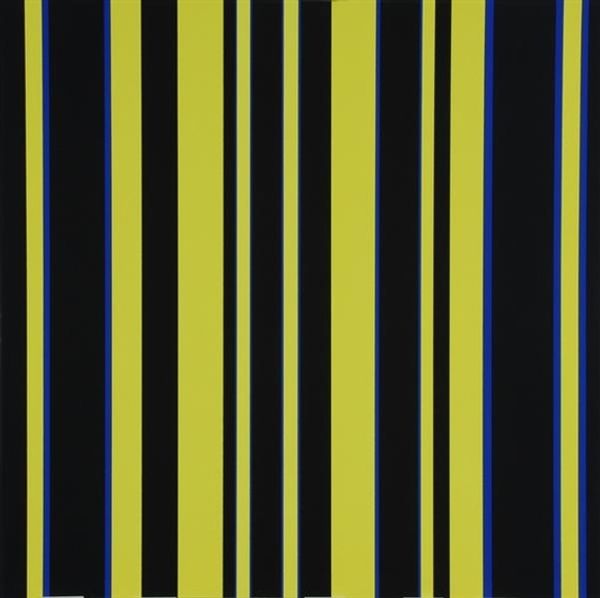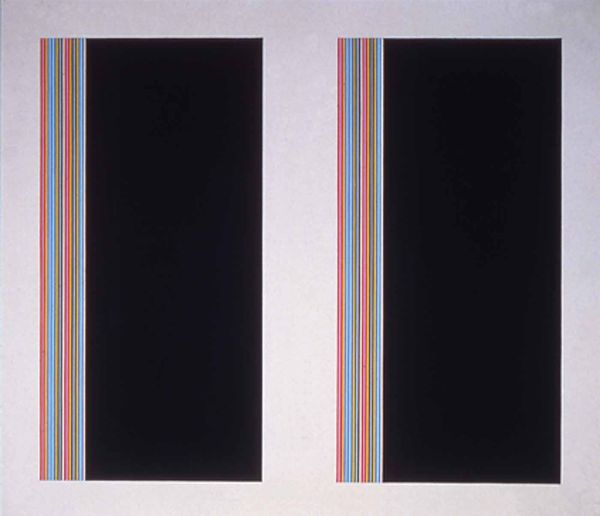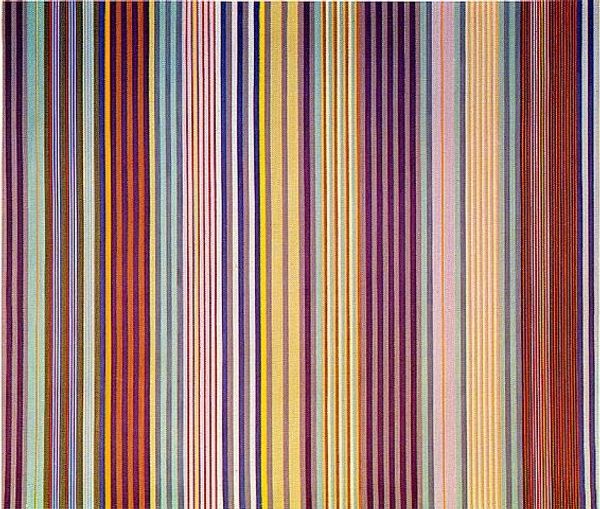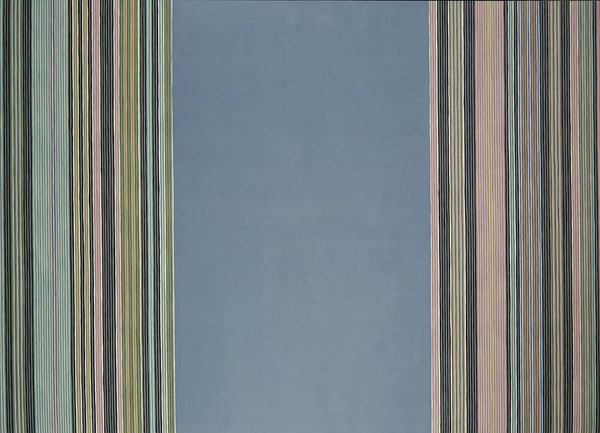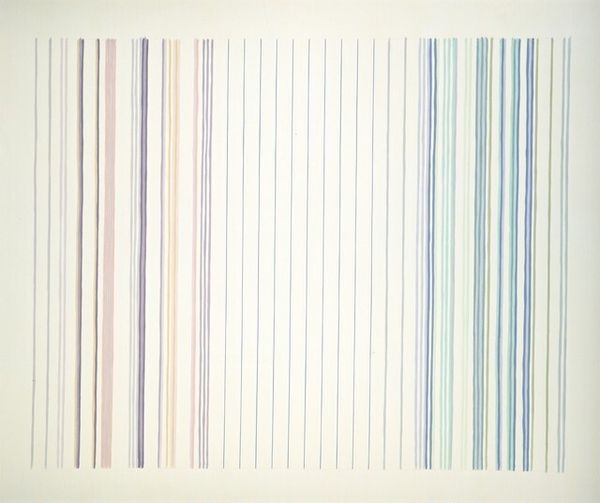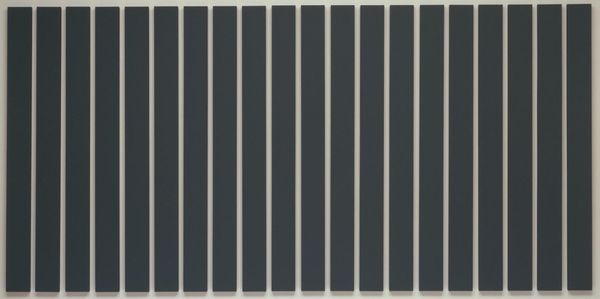
painting, oil-paint
#
abstract-expressionism
#
non-objective-art
#
painting
#
oil-paint
#
pattern
#
colour-field-painting
#
geometric pattern
#
geometric
#
line
#
pattern repetition
#
modernism
#
hard-edge-painting
Dimensions: 235.58 x 287.66 cm
Copyright: Gene Davis,Fair Use
Editor: We're looking at Gene Davis' "Black Panther," created in 1970 using oil paint. I’m struck by how these seemingly simple vertical lines create a surprisingly dynamic rhythm across the canvas. What do you see in this piece, and how does it speak to you? Curator: You know, it's like a visual poem, isn’t it? Gene Davis was a master of colour-field painting, taking inspiration from music—he called them "Chromatic Interval" paintings. The colours aren't really black and white, are they? Notice the variations—a slightly creamy off-white, charcoal grey… he’s playing with subtle vibrations and spatial relationships. It makes me think about the energy of a jazz improvisation, doesn’t it, that tension between structure and freedom. What emotions does it bring up for you? Editor: That's interesting, I can see the music analogy. For me, there’s a tension—the regularity is calming, but the slight imperfections, the subtle colour shifts, give it a human quality, a sense of unrest maybe. I'd thought it was a direct reference to the political movement... Curator: It is hard not to wonder about Davis’ intentions. “Black Panther” *was* painted in 1970, after all. I suspect Davis welcomed those multiple interpretations – and honestly, darling, an artwork truly lives in the dialogue we have with it, regardless of its title, doesn’t it? Editor: That's a good point. It makes me appreciate how even abstract art can be so layered with meaning. Curator: Indeed. It encourages you to see things that may not exist for somebody else and, honestly, that makes an artist very happy!
Comments
No comments
Be the first to comment and join the conversation on the ultimate creative platform.
